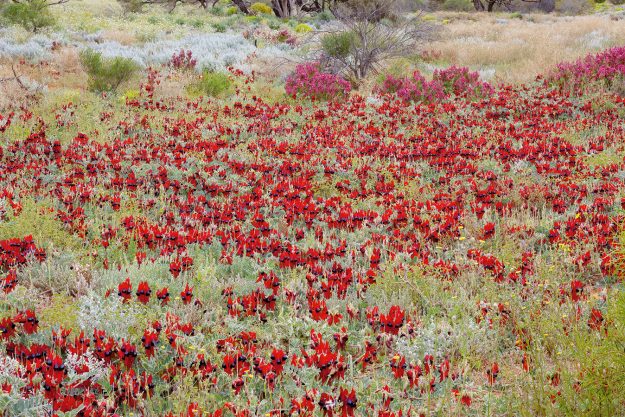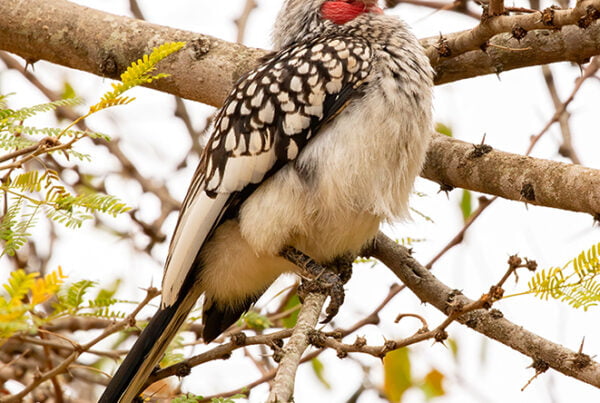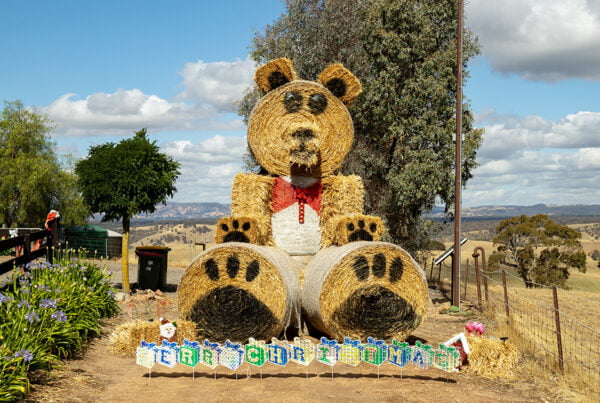Desert Rains Equals The Sturt Desert Pea
Desert rains equals the Sturt Desert Pea.In recent times Australia and in particular South Australia has experience massive floods in the heart of south Australia’s Outback. This means soon, the flowers will sprout and this includes the Sturt Desert Pea. You need the right amount of rain and consistent rain over a period of time to enable this amazing flower to sprout and flower.The floods usually do that.
It’s hard to predict where they will grow but all of the images in this blog article where taken in the last real epic down pour before the one that we had this year.(2022) It was a long time ago and that’s why when the big rains come, it can transform the landscape with an incredible splash of color.
The Sturt Desert Pea is such a powerful flower in its presence with the stunning color and yet it grows in the arid lands of Australia and these areas in the summer can be some of the most hostile arid areas that you can encounter and yet after rain , this vine like flower busts into life.
This flower is South Australia emblem and is protected in South Australia.
The Sturt Desert Pea is able to withstand the extremes of temperature experienced in inland deserts, and light frosts are tolerated by established Sturt Desert Pea plants.That’s the miracle of nature that such a stunning flower can bloom in the harshest environments.
The Sturt Pea was named after explorer Captain Charles Sturt (1795-1869)and while exploring in 1844 between Adelaide and central Australia, this is where he came across this remarkable flower. Although this is not a history lesson, the explorer in his own journey refers several times to the beauty of the desert pea in flower and the harsh nature of its habitat. It’s when you travel to these remote areas that you do marvel how it can grow in such harsh surroundings.
These images were taken over 10 years ago and are as relevant as today as they were then.When you do come across this beautiful flower in the desert, never take it for granted as you never know when you are going to see it again.I can’t stress that enough.This year should see this vine of the Sturt Desert Pea cover the landscape like a carpet in places.Get your cameras ready.
I was travelling in South Australia’s outback and I stumbled upon them. I was looking for them but at times it can be like looking for a needle in a hay stack.Unless you know someone, who has seen them in large clusters and who can direct you to the main area where they have been seen, it can be a difficult time in locating them.
Not only did I stumble across them, but I was also able to photograph the many mutations of the Sturt Desert Pea. This is a massive bonus as over time I have heard of mutations of the Sturt Desert Pea. These mutations take place naturally in the desert and haven’t been formed by the interference of humans.
Photographing so many can be a little overwhelming at times and if you are fortunate enough to come across the large clusters , there are times you are not sure where you start the process of photographing them. When this happens you just need to step back a little and observe what is either in front of you or what is behind you.
The good thing is that you have time to do this, they are not going to run away from you so being a static entity to photograph, it gives you time to make your choices. It’s not only your composition but also working out what your best lens is to do the task. When you have so many, there will be several lens that you’ll be able to use to tell the story.

What drove me out into the Outback at that time was I was looking for a mutation that was white with a red centre piece, a little like the Japanese flag. I was told that it had been seen and photographed by several photographers.I made some enquiries and no one was prepared to share the location so it was simply going out and seeing what would happen.
There were times I’d stumble across large clusters as shown in the picture below. Taking your time, not being in a hurry and seeing what takes shape is what I enjoy most about photography. Not being in a hurry is always the key.
I didn’t come across the while desert pea with the red centre , I assume it exists but I never did see any pictures of it but that doesn’t mean that it doesn’t exist. So that part of the journey wasn’t successful but instead I came across these mutations which was equally impressive.
When going on these adventures the excitement always comes in the unexpected and it’s the unexpected that brings those memories that will stay with you forever.
When I came across these mutations I was ecstatic as I had never seen these before, only the traditional Sturt Desert Pea and yet these were as pretty and beautiful as the main Sturt Desert Pea.
There are so many images that I could add to this blog as the mutations were stunning and emotive and endless. I’ve chosen a few to highlight the mutations that you may come across in your travels.
There is no doubt that the Sturt Desert Pea is a stunning flower and the compositions are endless whether you are photographing one or many.The key in photographing these magnificent flowers is to make sure you have time. Don’t be in a hurry. If you find these in the Outback of Australia or South Australia, it is a long way to go back to redo something that you didn’t do while you were there. Therefore don’t be in a hurry if you come across them.
One stunning flower that grows in the harshest of arid lands in Australia’s Outback after heavy rains.





















